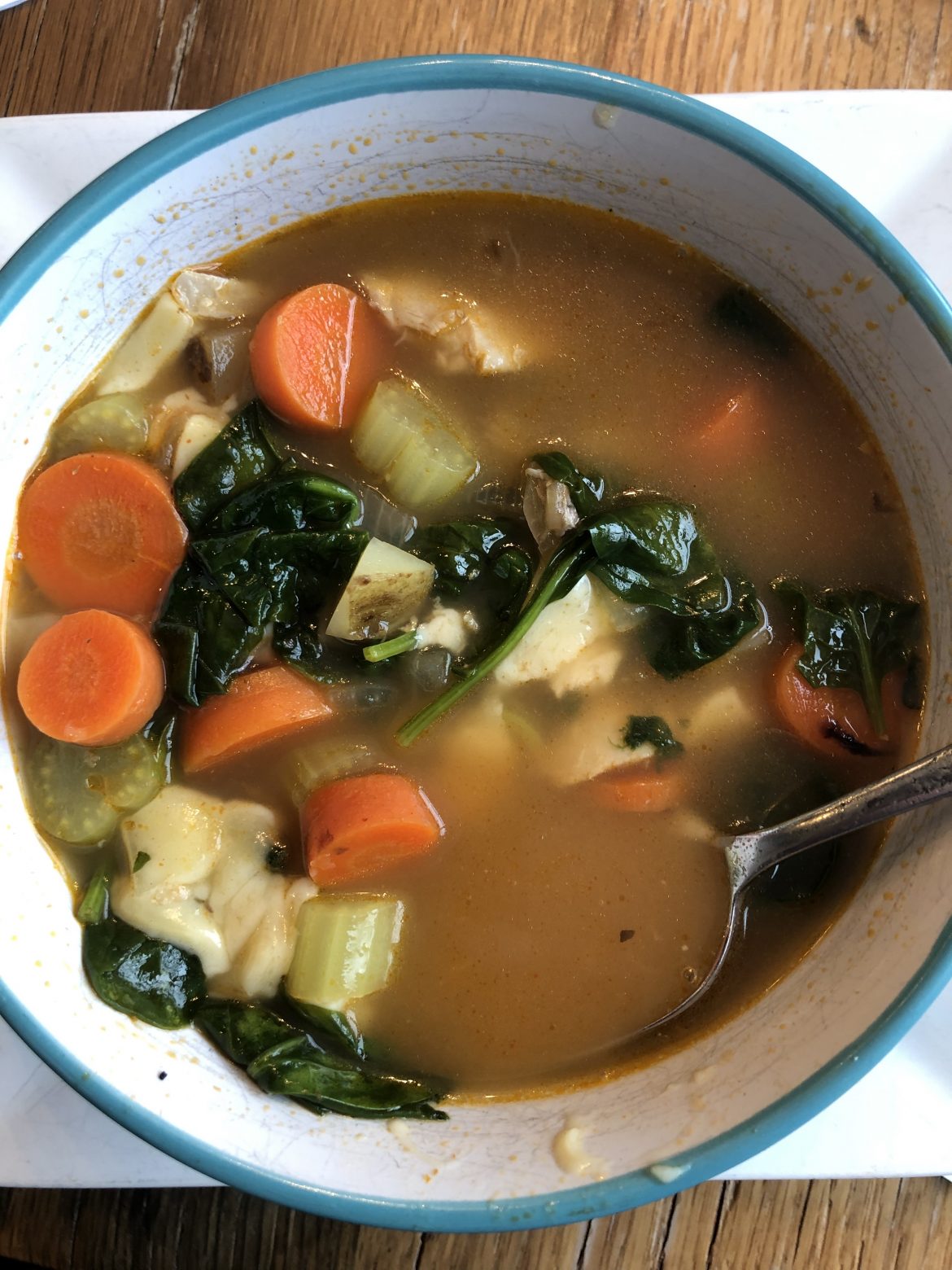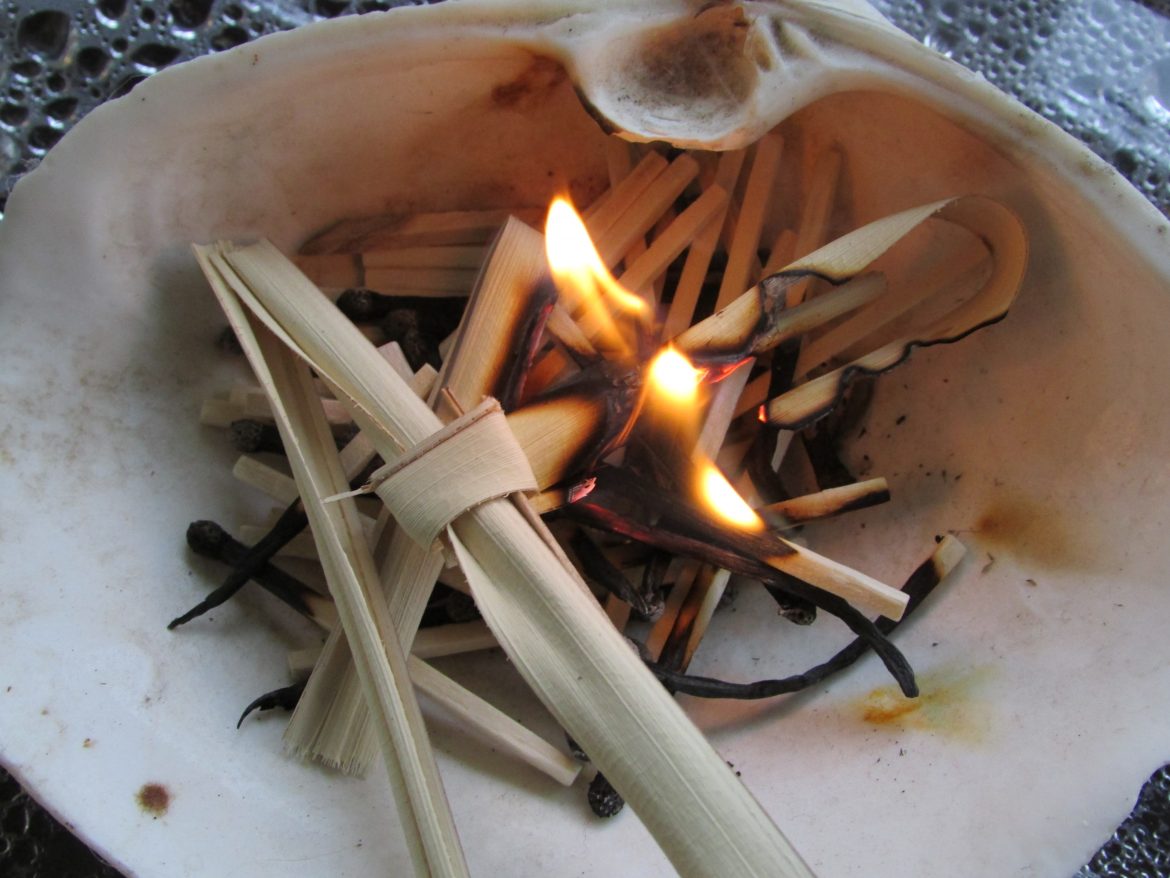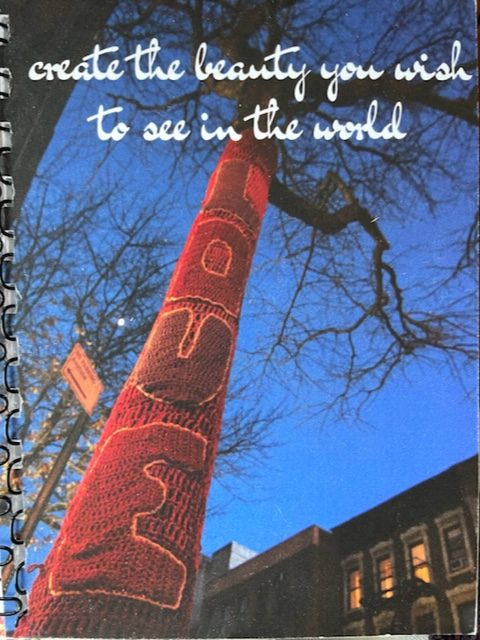Last week I was the chaplain for a gathering of Spiritual Formation leaders from across the country. I had the honor of curating the prayer/meditation times that helped people process their day and what the various speakers had to say. The opening keynote talk by Reverend Isaiah Shaneequa Brokenleg inspired my creativity and got me thinking! Reverend Brokenleg told a beautiful story about learning to make stew. …and compared good stew/soup to a church community.
A good stew/soup has yummy ingredients, layered flavors, and is usually made in a big enough pot to serve lots of people .
Good stew/soup provides hospitality and warms us up on a cold winter day.
What is your favorite soup or stew? if you happen not to like soup, what is your favorite comfort food? (use this food instead of soup as you pray through the questions)
Think about all the textures and flavors.
The colors.
Imagine the smell of the soup/stew wafting through your home.
Now consider the Stew/Soup of your life….Think about all the great flavors and ingredients. What are you thankful for? Take some time to thank Jesus.
There is a great passage that talks to us about how we are to be in the world. Read it and take some time to ponder or journal from the questions below.
“Let me tell you why you are here. You’re here to be salt-seasoning that brings out the God- flavors of this earth. If you lose your saltiness, how will people taste godliness? You’ve lost your usefulness and will end up in the garbage.
“Here’s another way to put it: You’re here to be light, bringing out the God-colors in the world. God is not a secret to be kept. We’re going public with this, as public as a city on a hill. If I make you light-bearers, you don’t think I’m going to hide you under a bucket, do you? I’m putting you on a light stand. Now that I’ve put you there on a hilltop, on a light stand—shine! Keep open house; be generous with your lives. By opening up to others, you’ll prompt people to open up with God, this generous Creator in heaven.What ingredients are you missing?
- Are you bringing good flavors to your world? Are you feeling flavorful or are you feeling scorched?
- What is scorched in your life? Talk to Jesus about this.
- If the stew is scorched, burned on the bottom, you don’t scrape the burned part into the rest of the stew…you pour the stew out into a NEW POT. After pouring the scorched stew into the new pot, Reverend Brokenleg said her grandmother used a potato to take out all the scorched taste. The potato was like Jesus, removing all the scorched flavor from the stew. What scorched-ness do you need Jesus to remove today, in your life, and in the life of your church community?
- What ingredients are you missing? What do you need to make your soup/stew better?
- Think about all the ingredients in your community…all the beautiful flavors they represent. Who are you grateful for in your community?
- Who is missing in your community or in your life who might add a different flavor to your stew? Who has been left out of your stew? Why have they been left out?
- What are tangible ways you can enhance the flavors of those who might be left out? Ask Jesus to show you.
I think we need to consider that we might need NEW POTS, Like New Wine Skins… in which to pour all the beautiful ingredients. And we definitely need new pots if the stew has been scorched. New pots and fresh ingredients…with room to mix them in fresh ways.
What could those New Pots look like in your church community? Or in your own life? Would they be smaller? Different sizes? Maybe we need a bigger spoon or more bowls to share our soup/stew. Who would you like to share stew/soup within the near future?
Read the passage again
“Let me tell you why you are here. You’re here to be salt-seasoning that brings out the God- flavors of this earth. If you lose your saltiness, how will people taste godliness? You’ve lost your usefulness and will end up in the garbage.
“Here’s another way to put it: You’re here to be light, bringing out the God-colors in the world. God is not a secret to be kept. We’re going public with this, as public as a city on a hill. If I make you light-bearers, you don’t think I’m going to hide you under a bucket, do you? I’m putting you on a light stand. Now that I’ve put you there on a hilltop, on a light stand—shine! Keep open house; be generous with your lives. By opening up to others, you’ll prompt people to open up with God, this generous Creator in heaven.
I love the thought of bringing out God-flavors and God-colors in the world! What could this mean in your life?
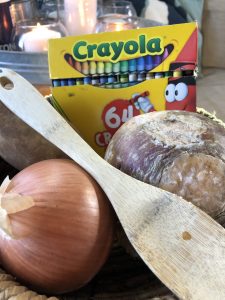
God-Flavors and God -Colors
As you eat soup this week or make soup or stew, use this as a reminder to bring out the God-flavors in your home, your neighborhood, at work or school. Taste the richness and thank Jesus for all the rich flavors and varied ingredients in your life. When you see or eat a potato, remember that Jesus takes away all the scorched things of our life and gives us back the good flavor. And like we prayed last week, use your spoon, and allow the Holy Spirit to stir up NEW THINGS in your life in the days ahead.
by Melissa Taft
You may have noticed a lot of posts about beauty these days. Perhaps we are all longing, in these times of unrest and disaster, for hope. It has been a hard couple of years all around – both personally for many and also globally. We have grieved collectively for the fires and the earthquakes and the deaths and the upheaval. We are collectively experiencing trauma and the remembrance of trauma, and it can be difficult at times to look forward. When the future is clouded or dark, how can we continue on in hope?
While I personally believe that embracing the hard, feeling one’s feelings, and holding grief is necessary and human, I also believe that one of the best ways through to healing is by equally embracing the beauty – and holding grief in tension with gratitude. It is possible to experience wonder, joy, beauty, happiness, and hope while also acknowledging grief, difficulty, and being in the ugly trenches.
Please don’t misunderstand – this is not meant to be “toxic positivity.” I am a bit of a “Pollyanna,” but there is a difference between telling the downtrodden that they should figure out how to be happy in their place anyways, and between offering true hope. One is a command or a guilt trip, and the other is an offering of what exists – leaving space for those in desperate places to partake as they can. So often as Jesus prepared to heal, He first met people where they were and acknowledged them with empathy. He truly is the God-Who-Sees, and He never shamed people for their circumstances or sorrow. If you are in a hard place, there may not be a human ‘silver lining’ you can see – and that’s okay.
Maybe right now it’s hard for you to see beauty – that’s also okay. I would like to invite you, if you can however, to partake of the hope and beauty that God offers to you. He offers beauty in many forms and many ways, to all. I imagine that you may seek it in your daily life, whether realizing it or not. How often do you scroll Instagram or Facebook and stop on a video about something beautiful that has happened, or watch a feel-good movie? Share a humorous image? It’s clear after all that we seek out heart-warming stories – whether real or fictional – and have since time immemorial.
That’s why I believe in the power of Beauty – it grounds us and it connects us while lifting our spirits no matter what circumstance we find ourselves in. My grandma Robbie, whom I’ve written about before, truly believed that beauty could save the world. She believed that God is Beauty, and that His Kindness leads us to Him. When God promises that He “knows the plans (He has) for you, plans not to harm you but to bless you and give you hope and a future,” it isn’t about your ability to bootstrap yourself into hope. It’s about the hope and future He already has available for you.
I loved Christine’s Meditation Monday about seeking beauty over ugliness. One of the practices she encourages is to write down three good things each day. It’s interesting to see how that little practice can grow seeds of gratitude and provide relief in the midst of difficulty. Many of you seemed to resonate with that post as well–and little wonder! We are heading into two years of Covid times and there has been much grief and sorrow and ugliness.
But there has also been beauty and opportunity for hope. John van de Laar’s post on How Beauty Can Save Us powerfully reminds us of how beauty transforms difficult spaces – recalling the artists of Sophiatown. Steve Wickham invites us to consider how Joy is possible and brings possibilities even in the “belly of grief.” Elaine Breckenridge’s relatable narrative about Covid upending rituals and the gifts she found in the midst of it – God’s Gifts in Creation – resonated with many who also had to pivot and find a current normal.
My current normal is rather frantic – I am in a season of difficulty, transition, and change. I hang on to these things, then, with an eager heart. My Grandma Robbie had another tip – put something fun on the calendar. “If you always have something to look forward to, you can keep going,” she was fond of saying. I invite you to put something on the calendar today to look forward to. Even if you create it out of thin air. Even if it’s silly or small. Find something to look forward to. Perhaps the weather will be clear enough to enjoy a sunset; mark it down. Find the bits of beauty God has scattered through your life, and let them be breadcrumbs of wonder leading you to hope.
Photo by Sharon McCutcheon on Unsplash
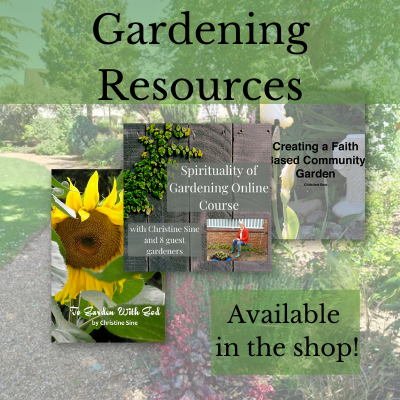 Whatever season your garden is in – winter, summer, spring, or fall – there is something to enjoy and tasks to accomplish. And there is spirituality to put into practice! Find God and community through the richness of soil and the shared values of growth. We have many resources available to help – click here to explore!
Whatever season your garden is in – winter, summer, spring, or fall – there is something to enjoy and tasks to accomplish. And there is spirituality to put into practice! Find God and community through the richness of soil and the shared values of growth. We have many resources available to help – click here to explore!
by Melissa Taft
As January eases into February here in the northern hemisphere, our sacred rhythms hold a necessary tension between the slumbering rest of Winter and the preparation for the new life of Spring. In the southern hemisphere, we have begun the preparations for harvest and the slowing down of winter. Wherever we are, it is time to rest, but also time to grow and prepare. The Church Calendar still celebrates the Christmas miracle in some traditions, but for most, at least in the northern hemisphere, Christmas has waned and we are in the wintering period before the next series of high events–Lent and Easter. While Lent–the Advent of Easter–is still more than a month away, many of you have begun preparing for it.
And so we too prepare–updating our resources and creating new ones. For example, we are thrilled to announce that Lilly Lewin and Christine Sine are partnering up once again for an online retreat focused on Lent! There will be more details in the weeks to come, but for now, please save the date–Saturday, February 26th from 9:30 am-12:30 pm.

There are several resources available now in the Godspace Shop–including a free download on activity ideas for all 40 days of Lent. Additionally, the post Resources for Lent has been updated for 2022 and will continue to be updated as we find new and interesting resources to add. And of course, our master list Lent & Easter Resource Page has been helpful to many of you. We are working to update that as well, so stay tuned and check back through the season. We will be sure to have new things to add and there will be new posts to come, so you may want to bookmark and check in frequently!
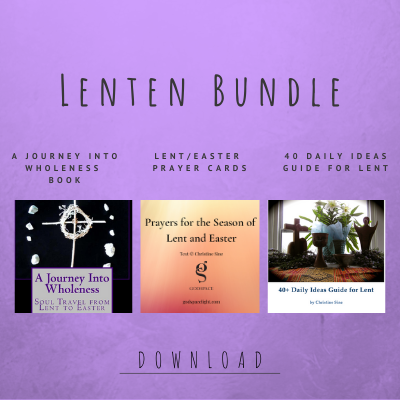 Enjoy beautiful prayer cards, an inspirational devotional, and 40 daily ideas guide for Lent — in a convenient downloadable bundle form! For all the details, click here!
Enjoy beautiful prayer cards, an inspirational devotional, and 40 daily ideas guide for Lent — in a convenient downloadable bundle form! For all the details, click here!
A couple of months ago, we moved house – a major change as both the property and area are very different from anything we have lived in before. In addition, both my husband and I are now fully retired, and though I know the time was right, I miss the church community where I was a minister a great deal. We both have plenty to do – I continue to write, he has enough DIY for a century and we are both particularly loving time with our children and grandchildren. But it is an adjustment – which he has made with ease and I am working at.
There was a particular irony, in that I had finally managed to tame our 80ft, uphill garden – as much as you ever can of course. I love gardening. I enjoy the feeling of soil in my hands, the sense of satisfaction in cherishing something to growth, and even the simple tasks such as pruning. So one of the first things I did was look at the garden for potential.
This garden is flat, which is a joy – gardening on the slope of the old house felt like you were slightly intoxicated and everything was somehow moving! This one is very small, and has only had the minimum done for some time. The result is that all around the edges are very large, old evergreen shrubs and a conifer hedge. One section has been cut back, resulting in a rather ugly set of brown broken branches where nothing will regrow – but the birds love it so it will need to stay.
In some of it, we will take out the old shrubs and build raised beds which I can fill with colour and wildlife-friendly planting. It will be a labour of love and take several years. But the back hedge – the ugly bit – will remain a haven for the many species we have already spotted who flit in to feed from a nearby wooded area and stream. Simple pleasures.
However in the centre of it is a gap. I have no idea why – perhaps it was simply pragmatic, a means to get to the back fence for maintenance. And it was to this gap that my gaze was initially and persistently drawn. What could go there? How soon can I get to a nursery? Ideas for planting buzzed around my mind like a persistent wasp.
Now, gardeners will be holding up their hands in horror reading this. The old adage is that you leave a garden a year to see what comes up, which is generally wise advice. There may be bulbs or herbaceous perennials just waiting to erupt as a glorious surprise. However I am pretty sure that is not the case here. There is deep rooted ivy all around the base of the hedge and I doubt anything could penetrate through.
Yet still I have held back. Looking at the gap, I felt for now I should not try to fill it, that it was a way God could speak to me in this new season. It is so easy, isn’t it, to not leave space in our lives, yet that very void holds the capacity for the new thing which may need to grow. This is particularly a temptation if we are reluctant to look inside, to face aging and mortality, or perhaps after these last two years are holding at bay peeking at the trauma and loss which have been so much a feature of this season. But if we simply fill every moment with activity, where will there be the opportunity to hear the gentle voice of love, to discern what may be next?
So, for now at least, I will leave that gap in the hedge.
 Join Christine Sine and Lilly Lewin on Saturday, February 26th from 9:30 am-12:30 pm PT for a refreshing and contemplative journey through Lent. Prepare your hearts and minds to find the beauty in Lent’s ashes. Save the date, more details to follow!
Join Christine Sine and Lilly Lewin on Saturday, February 26th from 9:30 am-12:30 pm PT for a refreshing and contemplative journey through Lent. Prepare your hearts and minds to find the beauty in Lent’s ashes. Save the date, more details to follow!
Last week I read an intriguing article that talked about how the words we use can change the structure of our brains.
“By keeping positive and optimistic words in mind, you stimulate the work of the frontal lobe. This area includes special speech centers associated with the motor area of the cerebral cortex responsible for your motor functions. As our experiment has shown, the longer you focus on positive speech, the stronger the impact on other areas of the brain will be.” (Research Confirms that The Words We Can Say Can Change the Structure of Our Brains)
At first I thought it sounded a little naive, but then I remembered Paul’s words in Philippians 4: 7-9 here quoted from The Message
Don’t fret or worry. Instead of worrying, pray. Let petitions and praises shape your worries into prayers, letting God know your concerns. Before you know it, a sense of God’s wholeness, everything coming together for good, will come and settle you down. It’s wonderful what happens when Christ displaces worry at the center of your life.
8-9 Summing it all up, friends, I’d say you’ll do best by filling your minds and meditating on things true, noble, reputable, authentic, compelling, gracious—the best, not the worst; the beautiful, not the ugly; things to praise, not things to curse. Put into practice what you learned from me, what you heard and saw and realized. Do that, and God, who makes everything work together, will work you into his most excellent harmonies.
Would you believe it – in the next couple of days 3 people suggested this was God’s word for my 71st year, even before I shared my thoughts with them. “Looks like God is trying to tell me something and I have been a little hard of hearing” I decided. I was sure of it when I read this article on Facebook:
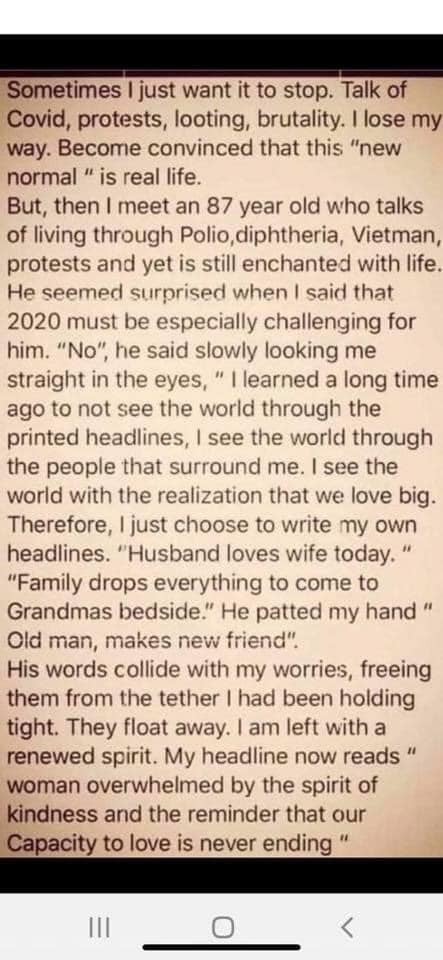 The words “I see the world through the people that surround me” really resonated in my soul. As someone commented this is a great spiritual practice to transform the gloom into glory. So I thought I would try an experiment that I heartily recommend to you.
The words “I see the world through the people that surround me” really resonated in my soul. As someone commented this is a great spiritual practice to transform the gloom into glory. So I thought I would try an experiment that I heartily recommend to you.
- Each morning I would look at the beauty not the ugliness. I would welcome God into the scarred places of trauma in my life and pray that I would recognize the beauty shining through the ugliness.
- II would write my own headlines for the day. When I suggested this on Facebook, I loved the headlines that appeared: Family meets together for first time in 2 years; The snow slows down the world and it is good; Covid keeps grandkids in US for 2 more glorious weeks with Nana!; Tongan volcanic eruption prompts long-term friends to reconnect. These headlines don’t change the devastation we see around us but they do help us find the inner resources to bring about change.
- Write down three good things that happen each day. This is a fun and energizing exercise – a little like the prayer of examen but with a strong emphasis on the good side of life and the recognition of the goodness of God in the midst of each day. One thing I noticed is that I started with writing 3 good things and that expanded so that now my list is at least 6 good things long.
This is not pretending that there are really no bad things happening in the world, but it does give us the inner resources to face them with more resilience and strength.
I called 2019 my year of Seeing Life Differently and was reminded of that this morning as I worked on this post. It made me want to transform Paul’s words in Philippians: “see differently as a way of life: displace worry with Christ at the centre of your life, discern the ways of truth not falsehood, transform ugliness into beauty, replace your curses with praise to God; settle into a way of life where you work for the good of all creation.”
As I wrote this today I reread the section in Howard Thurman’s biography where he talks about taking his daughters back to the beach in Florida where he spent many fun days as a child. Now (1968) it was a “whites only” beach. Instead of ranting against the injustice he explained to his daughters that they were so powerful that it took the police, the local government and changes in the law to keep them off the beach – an attitude that must have made them proud, not depressed at who they were. Perhaps we need more of that kind of an attitude too as we watch states in the US change voting laws to keep blacks and marginalized populations from voting, because it is true – these parts of the population are powerful and could change the future of this country so it is no wonder those who have usurped their power want to see their rights suppressed.
I know I could get myself in hot water by making a statement like this but part of what I realized this week as I instituted my new practices, is that in the midst of the stress and the pain and the overwhelming fatigue of our current environment, they can give me the new energy I need to work for change in a way that moves more towards God’s shalom purposes of wholeness for all creation.
I want this year to be a year of transforming the ugly into beauty and I hope you do too. Read through this poem that I wrote back in 2019 and prayerfully consider what you could do to bring about the kind of change God wants to see happen in the world.
Read life differently.
Read with love and not with hate,
with compassion and not with judgment,
with generosity and not with scarcity.
See your cup
not half full,
not half empty,
but overflowing with God’s goodness and light and life.
Read life differently.
Look for the wonder of uniqueness,
not the exclusion of sameness.
Embrace don’t reject.
Forgive don’t condemn.
Seek the Son of God.
Work diligently to know
he who is the way, the truth, and the life.
Follow his footsteps,
walk in the ways that leads to eternal life.
Christine Sine (c) 2019
 We all need the Wholeness of God…this resource includes reflections and activities for coping and thriving during the COVID-19 challenges in search of shalom as well as hope for restoration during and after this period of social distancing.
We all need the Wholeness of God…this resource includes reflections and activities for coping and thriving during the COVID-19 challenges in search of shalom as well as hope for restoration during and after this period of social distancing.
A contemplative service with music in the spirit of Taize. Carrie Grace Littauer, prayer leader, with music by Kester Limner and Andy Myers.
Permission to podcast/stream the music in this service obtained from One License with license #A-710-756 with additional notes below:
“Wisdom of Saints” Music and lyrics by Kester Limner, shared under the Creative Commons License, Attribution (CC-BY)
“Nothing Can Ever” Copyright and all rights reserved by GIA/Les Presses de Taizé
“Rabboni Beloved” By Kester Limner and Andy Myers, shared under the Creative Commons License, Attribution (CC-BY)
“Veni Sancte Spiritus” Copyright and all rights reserved by GIA/Les Presses de Taizé
Thank you for praying with us! www.saintandrewsseattle.org
Last week Tom and I recorded a Facebook live session on Establishing a Rule of Life. Not only was it extremely popular but we had some amazing responses including the beautiful poem below by Ana Lisa De Jong. Ana Lisa commented: “Thank you Christine Sine and Tom Sine for the inspiration. Your inspiring FB live today and your Mustard Seed community is a fruitful harvest in itself.” For more information on rule of life check out this post Establishing a Rule of Life Rooted in Shalom Enjoy the recording and the poem.
MUSTARD SEEDS
Teach your children to plant trees.
Teach them to open their hands,
scatter seeds.
The world which would squeeze them to its mould,
would have them hold on tight,
bury them under its avalanche
of consumption.
Whereas breathing, living,
is found in breaking open,
pouring ourselves out.
Scattering the seed
which without there isn’t fruit.
Teach your children the beauty of creation.
That what we do makes a difference,
just in the act of doing.
The war for our children’s souls is quiet,
quiet as the drug that lulls them to sleep.
Open their hands, give them seeds.
Living Tree Poetry
January 2022
Looking for New Mustard Seed House Members
It seemed very appropriate to post this today as we are also looking for new members for the Mustard Seed House
As an Amazon Associate, I receive a small amount for purchases made through appropriate links.
Thank you for supporting Godspace in this way.
When referencing or quoting Godspace Light, please be sure to include the Author (Christine Sine unless otherwise noted), the Title of the article or resource, the Source link where appropriate, and ©Godspacelight.com. Thank you!

